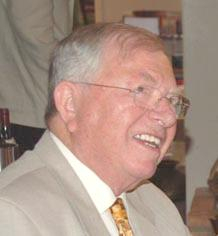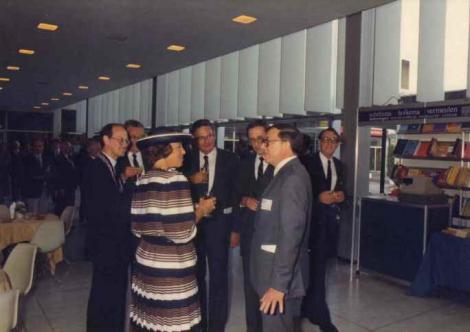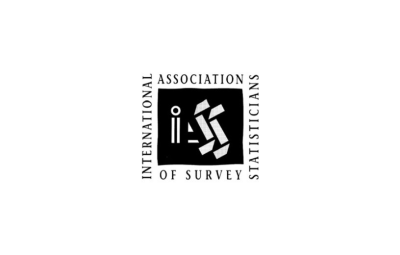
James Durbin, internationally renowned statistician and former president of the International Statistical Institute (1983-1985) died on 23 June 2012 at the age of 88. He was a graduate of St John’s College, Cambridge and Professor of Statistics at the London School of Economics and Political Science (LSE) until his retirement in 1988.
Jim Durbin was also President of the Royal Statistical Society (1986-1987) and one of the founding fathers and first Treasurer (1975-1981) of the Bernoulli Society for Mathematical Statistics and Probability. He served on the editorial boards of Biometrika, The Annals of Statistics and the Journal of the Royal Statistical Society, Series B. Fortunately, his many services to the profession are well recognized. He was Honorary Professor of University College, London, Fellow of the British Academy, recipient of the Royal Statistical Society’s Guy medal in Bronze (1966), Silver (1976) and Gold (2008), and Fellow of the Institute of Mathematical Statistics (1958), the American Statistical Association (1960) and the Econometric Society (1967). In 1999 he was elected Honorary Member of ISI.
The research of Jim Durbin in mathematical statistics, applied probability and statistics in the social sciences has been highly influential as well as wide ranging. Jim was always interested in a serious applied problem and a solution with a solid theoretical basis. At LSE he had ample opportunity to follow his inclination, and in doing so, he has changed research at LSE and elsewhere. This is not the place to elaborate on this, especially since this is discussed in an excellent interview with Jim in Econometric Theory (Phillips, 1988).
In the series of interviews with the honorary members of ISI, Jim was asked if he would like to comment on some of his contributions to international cooperation in statistics. First of all Jim mentioned the start-up of the European Meetings of Statisticians and I do feel that this is indeed his most important contribution to international cooperation. The story has been told before, but it bears retelling.
After World War II there was an increasing interest in Europe in statistical theory spurred on by the introduction of statistical methods in science and industry. In Britain and the US this was not a new phenomenon and statistical societies provided journals and conferences on statistical theory and methods. In continental Europe there was hardly anything of the sort and people interested in statistics felt isolated. Of course there were the biennial Sessions of ISI that were held in Europe from time to time, but these were largely devoted to official statistics. So one day, Jim and Henri Theil, an econometrician from Rotterdam, set out to do something about this. Unfortunately, ISI didn’t feel there was a role for them here, but when Jim spent the academic year 1959/60 at the University of North Carolina in Chapel Hill, he spoke to George Nicholson, the secretary of the Institute of Mathematical Statistics (IMS) who was interested. After a further discussion with IMS president-elect Erich Lehmann during the 1960 Berkeley Symposium, IMS decided to add a European Region to its many American ones, and start sponsoring biennial IMS Regional Meetings in Europe, to be organized by a European Regional Committee chaired by James Durbin. In September 1962 the first European Meeting of Statisticians was held in Dublin with 300 participants and a superb party organized by the Guinness brewery in honor if their former brewmaster W.S. Gosset, also known as Student. These meetings have continued to the present day and have been an important factor in the development of statistics in Europe. In 1975 the meetings were taken over by the Bernoulli Society, the new ISI Section for statistical theory, which Jim also helped found. So in the end the European Meetings of Statisticians became an ISI activity as they should be. Indeed, Jim had something to be proud of!
Another achievement that Jim was justifiably proud of was establishing IAOS, the ISI Section on Official Statistics. Originally, the main business of ISI had been official statistics, but as the number of specialized sections devoted to other areas of statistics kept growing, official statistics became less central and Jim feared that the official statisticians might lose interest in ISI. He felt that the best way to prevent this would be to start a new Section on official statistics in ISI. His first proposal at the Warsaw Session in 1975 failed to get sufficient support, but the idea was revived later and a committee with Jim as a member and chaired by Vera Nyitrai was appointed to consider the matter further. This led to the establishment of IAOS. Even though Jim never took part in the activities of IAOS, his feeling that ISI should not neglect any important area of statistics is worth remembering.
The first time I met Jim must have been at the ISI Session in Paris in 1961. ISI director Bart Lunenberg, who was always helpful for young people, introduced me to this famous person who asked me what I was doing for my PhD. After I mumbled something appropriate, Jim told me that his undergraduate degree at Cambridge was a war-time BA. in mathematics for which the requirements were five terms in the mathematics courses, which amounted to a year and a half, followed by four terms of national service. In the mathematics programme there was a compulsory statistics course which Jim found boring and for his national service he did applied statistics work in the Army Operational Research Group. I was pleased to hear that one could go so far on so little, because I sometimes felt I was being taught far too much that I would never use. Of course, at the time Jim neglected to add that he went back to Cambridge after the war, planning to switch to economics, but ending up in a new postgraduate programme in mathematical statistics, with Henry Daniels as a supervisor. That would be hard to beat for a statistics education anywhere in the world, but I have to admit that a spectacular career based on a war-time BA is a much better story and Jim was one of the best storytellers around.
Over the years our paths in the statistical community kept crossing. Jim got me involved in organizing the European Meetings and ISI director Bart Lunenberg was happy to have found a compatriot nearby that he could put on various other committees. Needless to say that Jim was usually there too. Then one day Bart told me that in 1985 the Centenary Session of ISI was going to be held in Amsterdam and that I was going to organize it. Statistics Netherlands clearly felt that they would have to foot the bill, and so somebody else should do the job. Of course I protested, but Bart reminded me that Jim would be president of ISI at the time. So at least there were three of us and after a lot of work the Session went fine and we thought we hadn’t done so badly.

Of course scientific meetings are not only scientific, but also fun to meet one’s friends in wonderful places. An ISI member once called the ISI Sessions “academic tourism” and one has to admit there is that aspect to it. The three pictures below show the various aspects of the ISI Sessions that we have enjoyed so much. The first picture is academic tourism with Jim, me and Robert Mokken on our way to the rapids during the Manila Session. The second shows Jim speaking with Queen Beatrix of the Netherlands during the Amsterdam Session. Notice Bart Lunenberg in the background making sure that nothing goes wrong. The third shows the reward of all the hard work that goes into the Session, when the organizer of the Tokyo Session Dr Okuno (third from left) invited (left to right) Bella and Bart Lunenberg, Jim and Anne Durbin and me for a party at his club. It is obvious from these pictures that Jim felt comfortable with each of these roles. Those who knew Jim Durbin are sad that he is no longer with us, but the good memories remain.
Willem van Zwet




